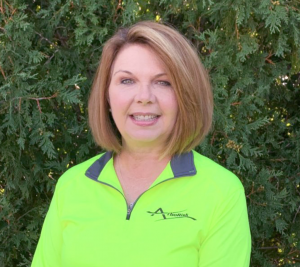Improving Safety with Leading Indicators
Improving Safety with Leading Indicators
Written by Eric Petersen, CIC
One of my favorite things about the tree care industry is interacting with passionate people from all across the globe who are trying to help get every arborist home safe each night. Sometimes conversations spark waves of momentum and begin to force change within the industry. I feel we are at the beginning of a new wave of momentum within the tree care industry when looking at how to prevent injuries. That new wave is being caused by using leading indicators to improve safety.
While the concept of leading indicators is not new, it hasn’t been until recent years that I’ve heard people start to talk about them at tree care events. OSHA defines Leading indicators as “proactive, preventive, and predictive measures that provide information about the effective performance of your safety and health activities.” They are metrics that can be recorded and tracked prior to an accident happening.
Just like a doctor will analyze your blood sample for irregularities to catch a future illness or disease before it negatively affects you and a quality control chemist will ensure the molecular compound of their product is just right, your safety committee can analyze certain metrics within your company to highlight future safety concerns, thereby giving you time to address that concern before an accident happens.
In a recent TCIA Magazine article (Leading and Lagging Indicators), Bill Owen states,
“Understanding leading indicators and incorporating them into a safety program balances a program and improves overall results by focusing on the behavior that leads to successful outcomes.”
Put another way – behavior first, results second. Building a safety culture around the proper behaviors will give you a better result. And the better result we are all looking for is to reduce or eliminate the severe injuries that continue to plague this industry.
Common examples of leading indicators are: Safety meetings, Jobsite safety audits, individual and group training events, Jobsite Hazard Analysis, driving tests, Motor Vehicle Record checks, equipment inspections, etc.
When identifying what leading indicators you want to measure within your company, make sure they are specific enough to be easily tracked. A simple Excel spreadsheet can do the trick. Click here to download a free copy of our Leading & Lagging Indicator Dashboard, which was modified from Bill Owen’s example within the aforementioned TCIA Magazine article “Leading and Lagging Indicators.”
At your next Safety Committee meeting, have a discussion around what behaviors (leading indicators) your company can track to begin to highlight where future problems may arise. Create a goal for each of those behaviors and start to measure how your team is doing against the goal. When getting started looking at leading indicators remember, it’s okay if you adjust the metrics you’re using over time as the concept is a bit different than looking at lagging indicators (or using past incident data). The key is to shift your focus onto the behavioral metrics that ultimately help prevent injuries and accidents from happening.
For more information from OSHA visit their webpage dedicated to Leading Indicators here.
Since ArboRisk’s mission is to get every arborist home safe each night, we’ve designed a specific consulting package to work one-on-one with your organization. Visit our webpage for the Thrive Safety Package to learn more. In addition to the Thrive Safety Package, all ArboRisk clients receive a Safety Culture Assessment that allows you to peer into your safety culture and find areas that need improvement.






Recent Comments